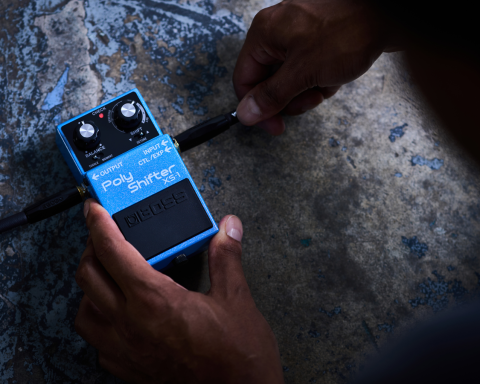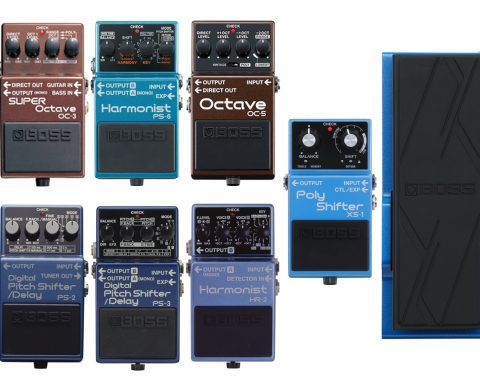Reverb is one of the world’s most coveted and recreated effects. In 1939, Laurens Hammond first patented a spring-based reverb system for use with church organs. Since then, reverb has taken a long journey with popular music. Since then, digital reverb has evolved into new interpretations of the effect. Today it is still one of the most popular effects in the world, and there are more variations of reverb type than ever before. Learn about reverb’s history and how to harness its power.
Reverb Background
Spring-tank-loaded amplifiers arrived in 1961 and reshaped how guitarists used the effect. The convenience of a stompbox came in 1987 when BOSS created the first-ever digital reverb pedal: the RV-2. The engineers gave the name RV-1 to the BOSS Rocker Volume pedal in 1980. As a result, a revolution in artificial reverb for guitarists began with the RV-2.
The RV-2 gave guitarists like Johnny Marr access to coveted tones without needing a spring tank-loaded amplifier or separate reverb unit. It provided added control and the ability to shape guitar reverb like never before. The pedal was both affordable and easy to adjust in a live setting.
What is Reverb?
Many guitar effects produce new, exciting sounds impossible in the natural world of acoustic instruments. Conversely, reverb is simply trying to expand, excite, and emulate the sound of the natural reverberations created by soundwaves reflecting off surfaces. Reverb aims to simulate and control the tone and size of those reflections without relying on a particular room or its conditions.
"Reverb aims to simulate and control the tone and size of those reflections without relying on a particular room or its conditions."
Of course, digital reverb does a lot more than that. Before reverb was digitized, spring tanks and plate reverb were the most popular form of the effect. Both attempted to recreate a natural-sounding reverb, but neither did so convincingly by modern standards. Instead, spring and plate have become coveted reverb tones in their own right. Both have unique characteristics recreated by digital reverb pedals.
FIVE REVERB PEDAL USES
1. Sound Like a Vintage Spring Tank
One of the most coveted guitar tones is the splashy echo of a reverb tank-loaded valve amplifier. Traditionally found in amplifiers of the ’60s, their natural-sounding reverb has cemented itself as a fundamental and quintessential tone for guitarists.
The sound spans genres and decades of popular music. However, it does present some problems. Many amplifiers and amplifier heads don’t come with a reverb tank. Reverb tanks are cumbersome, heavy, and often unreliable, requiring frequent maintenance. They can be hard to control—often featuring a single blend control for the reverb and not controllable via a footswitch.
Players can easily create a retro reverb sound using the RV-6 or any BOSS reverb pedal with the spring preset. Spring reverb works as a character enhancement like on “I Feel Change” by Menahan Street Band. Or it can sound more extreme, as on “Dern Kala” by Khruangbin. It’s a versatile, utterly classic-sounding effect.
2. Modern Soundscapes with Shimmer Reverb
Shimmer reverb has taken modern music by storm, and it’s a brilliant way to expand sonic horizons. The effect pitches reverberations up a few octaves, creating a dreamy, digital wave of reverberations.
Credited as the creation of Brian Eno and David Lanois in the ’80s, the effect took a while to make its way to a stompbox. Rush’s “The Speed of Love” and “The Go Getter” by The Black Keys offer stellar examples of the effect in action. A great way to get the most out of shimmer reverb is to push the effects level past 3 o’clock. This approach can be highly effective on tremolo-picked guitar lines.
3. String Section with a Volume Swell
A surprisingly easy way to make the most from a reverb pedal is to set the effect level and time controls relatively high. Then roll off the volume control of the guitar. Finally, strum a chord, immediately roll the volume control back to full, and then quickly off again.
The guitar pick attack gets hidden by rolling the volume up after the chord strum. Instead, the notes swell into existence like a bowed instrument. The reverb holds the notes after the volume control gets rolled back, shrouding the loss of dry signal. This elegant method can create ambient soundscapes without the attack of a naturally played guitar.
"The reverb holds the notes after the volume control gets rolled back, shrouding the loss of dry signal."
4. Ethereal Soundscapes by Pushing the Pedal
Digital reverb can accurately simulate the natural sound of room reverb and the classic reverb tones of plates and springs. Still, feel free to push digital reverb beyond the realms of real-world simulations.
Nearing their full clockwise rotation, the time and effect level of the reverb pedal is capable of extreme, ethereal soundscape tones. When used with the Modulate voicing of an RV-6, an adventurous player can turn a guitar into a synth pad. These drifting, modulating reverb tails add depth and character to any simple melody or handful of slowly picked notes. Allow the reverb pedal to drive the music. “The Mighty Rio Grande” by This Will Destroy You is an excellent example of a simple guitar part enhanced and driven with reverb.
5. Subtle Enhancement
Conversely, reverb doesn’t have to dominate the scenery. Nor does it need to be used to emulate a classic reverb type or studio tool. Players can effectively use the effect to add depth and space to a solo guitar.
Often a guitar part played unaccompanied can sound especially dry. Using the simple room or hall voicing of a reverb pedal like the RV-500 can make a guitarist’s playing feel more natural and rooted in its environment. Let the music breathe, using the spaces between notes rather than constantly filling them. The simulation of space fills out the performance, rounding off any harshness.
"Using the simple room or hall voicing of a reverb pedal can make a guitarist's playing feel more natural and rooted in its environment."
An Essential Creative Tool
Reverb pedals are essential creative tools for guitar players. The effect is as valuable for a solo guitarist as a post-rock act. Players can use reverb aggressively and expansively, creating new genres of music. The effect is also helpful in traditional use cases, emulating bulky and expensive vintage units. Furthermore, it can be used for simple tone enhancement, helping the guitar sit in the mix.






